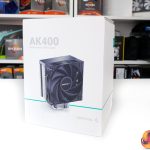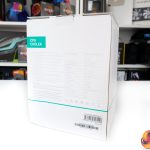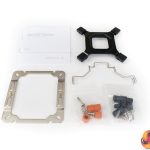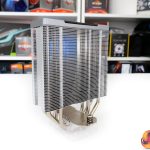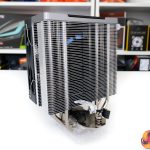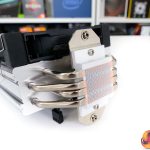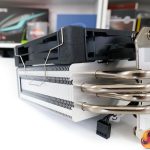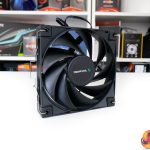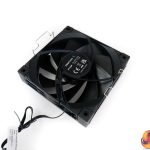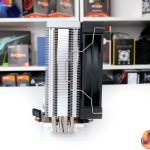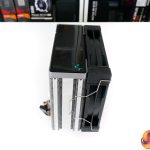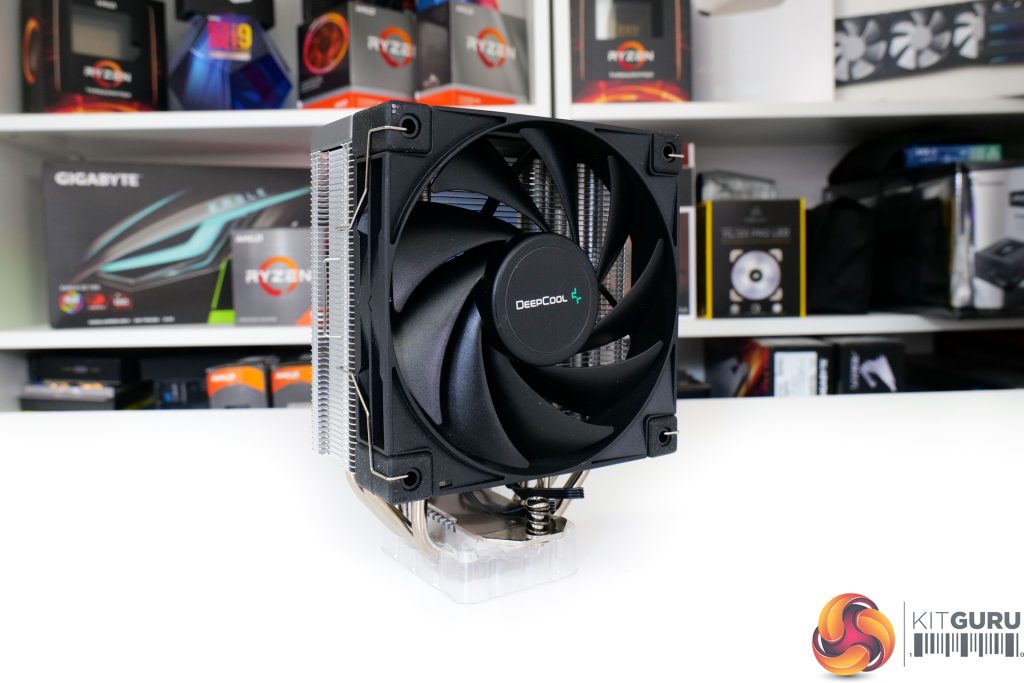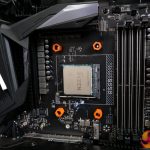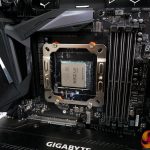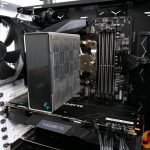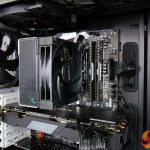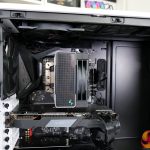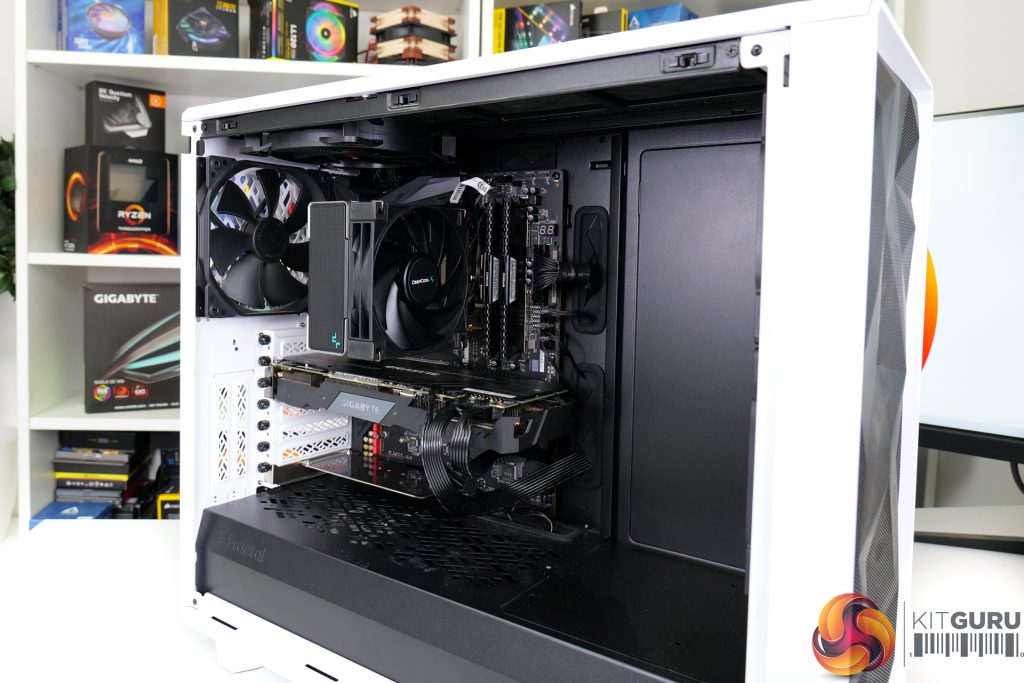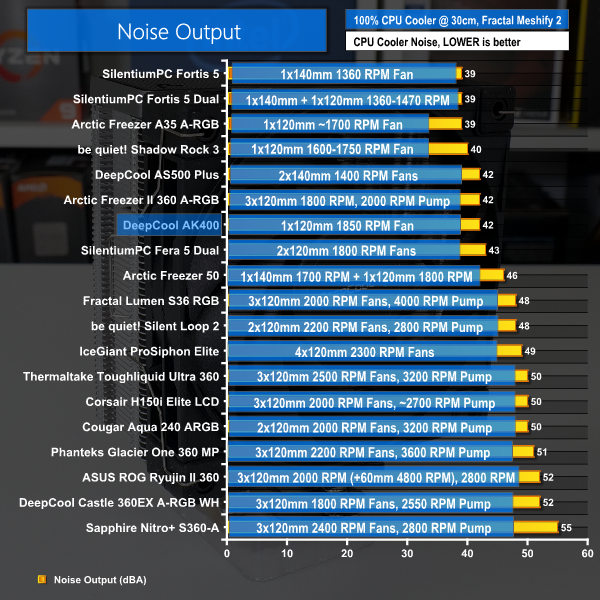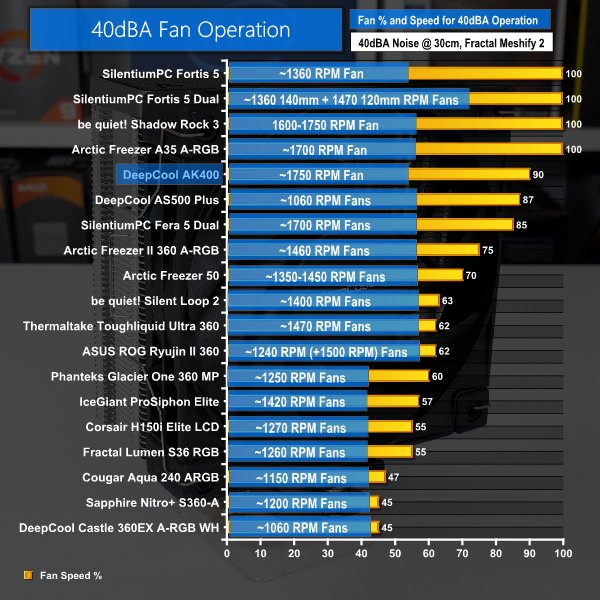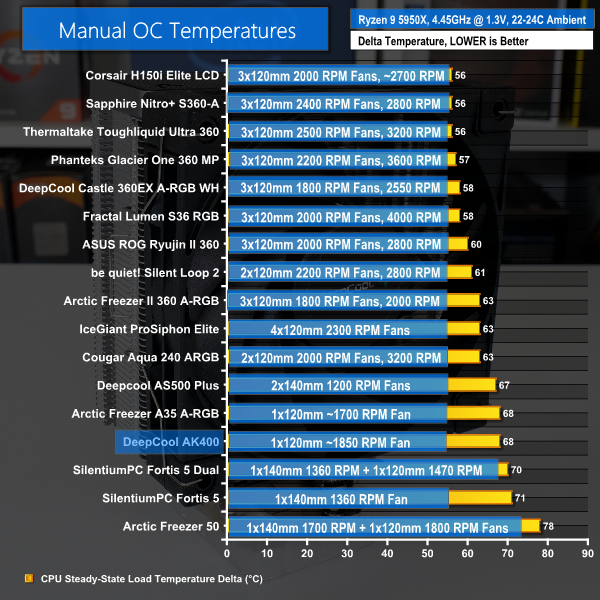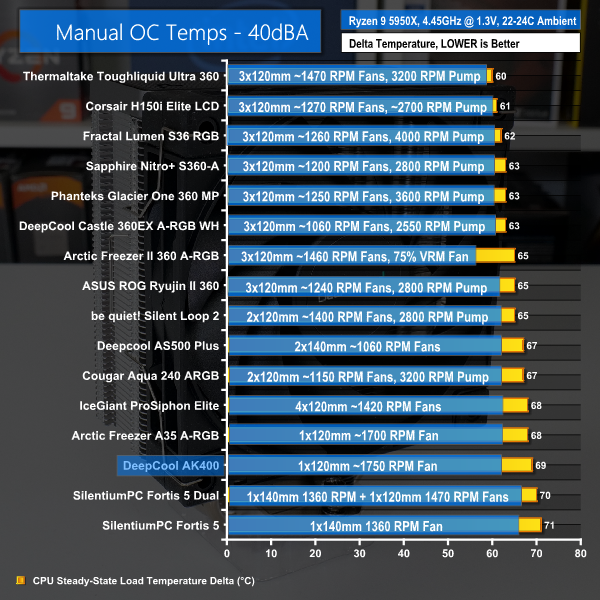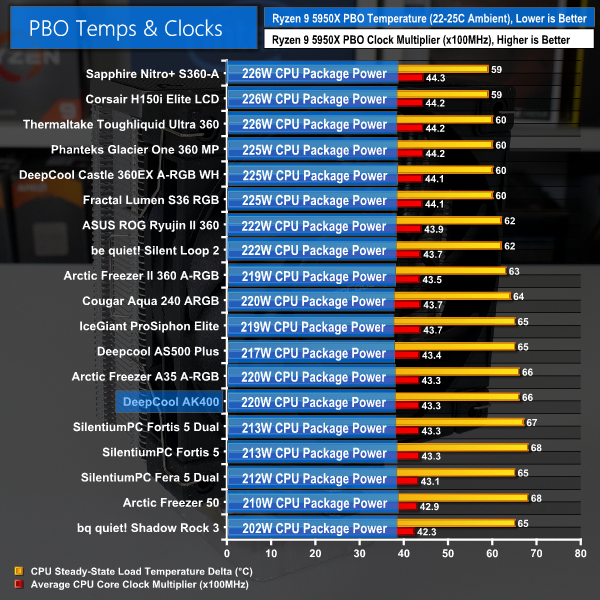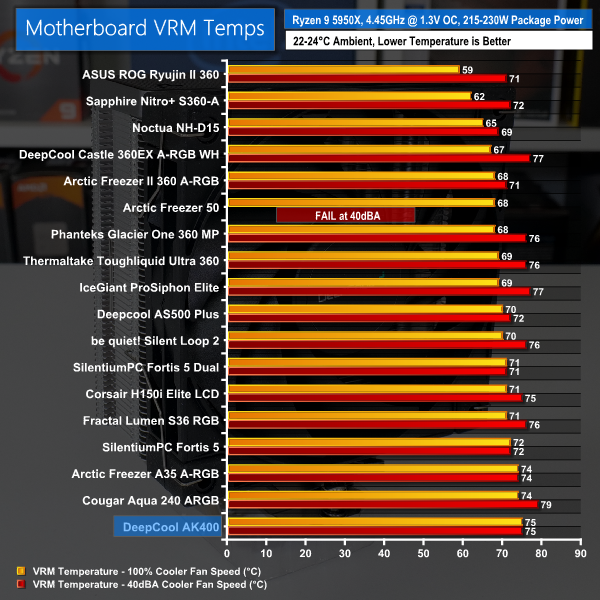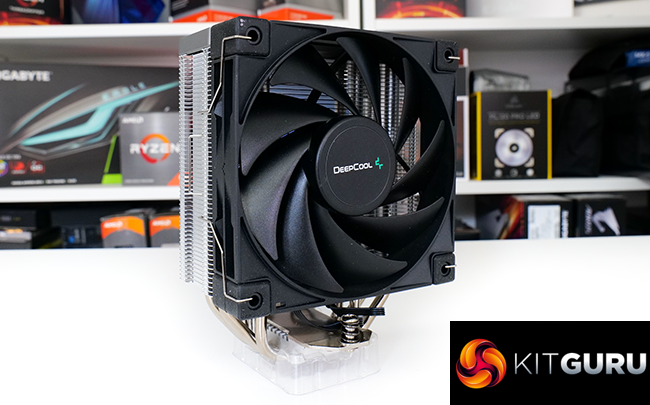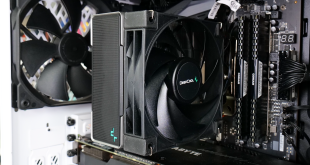
DeepCool has proven its ability in designing and manufacturing a range of competitive coolers. We have examined the vendor’s premium single-tower units, high-end dual-tower air coolers, and eye-catching AIO liquid coolers. This time, we are looking at the wallet-friendly AK400, a 120mm-class air cooler that costs less than 35 Euros.
In terms of accessories, DeepCool includes mounting hardware for modern Intel and AMD mainstream platforms. There is also a spare set of metal fan retention clips if you feel the need to upgrade to a dual-fan setup in the future. No tube of thermal paste is supplied as this is pre-applied to the cooler’s base.
DeepCool uses a 120mm-class heatsink as the foundation for the AK400. The raw aluminium fin array is sensibly sized at 120x45x152 mm. Four 6mm copper heatpipes shift energy away from the CPU heatspreader.
These heatpipes are deployed in the Heatpipe Direct Touch (HDT) approach, as we often see from lower-cost coolers. This is a sensible move by DeepCool. DeepCool does, however, squeeze the central two heatpipes closer together than the outer two. This is designed to bias heat extraction potential towards the centre of a CPU’s heatspreader, which can possibly make a difference depending on your specific Intel or AMD chip.
The fin array itself is manufactured using a ‘matrix array design’ according to DeepCool. There are areas where some fins jut out further than others. This will control the pressure profiles throughout the fin array, to some extent.
DeepCool deploys its 120mm Fluid Dynamic Bearing fan for use on the AK400. The speed range on the 4-pin PWM control curve is 500-1850 RPM, which is pretty good for a budget cooler. Though it is – unsurprisingly – outdone by Arctic’s competing A35 series coolers.
Gunning for a no-nonsense design that focuses primarily on performance and cost, DeepCool uses a reasonably good-looking all-black fan but opts not to run any form of RGB lighting. There is, however, provision for noise reduction, as the fan is mounted to the heatsink with rubber contact dampers.
With a 50,000-hour rated operational lifespan for the FDB fan, DeepCool looks to be middling for a budget cooler in that number.
Warranty is three years, which is OK for a simple air cooler. But as a comparison, the likes of Arctic and SilentiumPC are offering up 6-year and above warranties on their competing, budget products. So DeepCool does look to be lacking in this department.
Pricing for the DeepCool AK400 is 34.90 Euros which should translate into around £30-33 in the UK. According to DeepCool, there is also set to be a white version of the cooler available in June 2022.
AM4 installation for the AK400 is straightforward and was simple enough with a pair of hands.
Four orange retention plastic pieces hold the default AM4 backplate in position. The metal bracket is then screwed into position using the specific AM4 mounting holes. With the fan removed, the AK400 heatsink can be screwed onto the retention bracket. No thermal paste handling is required as it is pre-applied to the cooler’s base. The 120mm fan is then clipped into position and connected via its 4-pin PWM cable.
The overall mount is solid and the small stature of the cooler means that RAM and VRM interference looks to be a non-issue for most sensibly laid out motherboards.
Test System:
- Processor: AMD Ryzen 9 5950X
- Overclocked Settings: 4.45GHz all-core @ 1.312V (UEFI), Medium LLC – around 1.3V delivered
- Motherboard: Gigabyte B550 Aorus Master
- Memory: 32GB (2x16GB) 3600MHz DDR4
- Graphics Card: Gigabyte RTX 2060 Super 0dB Mode
- Chassis: Fractal Design Meshify 2
- Chassis Fans: 2x140mm 1000 RPM Fractal Front Intake, 1x140mm 1000 RPM Fractal Rear Exhaust, 1x140mm 1000 RPM be quiet! Pure Wings 2 Roof Exhaust (for air cooler testing)
- Power Supply: Seasonic Prime TX-1000
- Operating System: Windows 10 Pro 64-bit
Testing Methodology:
- For testing, we use a 30-minute looped run of Cinebench R23 and record the steady-state CPU temperature at the end of the test. This ensures that the CPU has had ample time to warm up and reach steady state under all of the coolers.
- Ambient is maintained around 22-24 degrees Celsius. Where there is variation beyond this temperature range, we add in extra repeated tests to ensure consistency.
- We also test each cooler with at least two fresh installs (typically three) to mitigate the likelihood of a dodgy mount spoiling results.
Test Results:
Acoustics
Let’s start off with noise performance at 100% fan speed. This is important for getting an indication of where our performance expectations should lie based on noise output.
DeepCool’s single 120mm FDB fan running at its 1850 RPM top speed registers 42dBA noise output in our test.
This is a mediocre result at best, particularly when the direct competitors in the form of Arctic’s Freezer A35 and some of the SilentiumPC units are run notable quieter.
Getting the AK400 down to 40dBA noise operation required the fan speed to be set at 90% duty cycle. This registered around 1750 RPM according to the UEFI readings.
This is a modest drop in the running speed and duty cycle percentage, so we do not expect to lose notable amounts of cooling performance by running at the lower noise output. But it is important to note that some direct competitors already run quieter than this reduced fan speed level out of the box.
Thermal Performance
Performance from DeepCool’s budget AK400 is solid when tasked with a manually overclocked Ryzen 9 5950X processor.
We saw a delta temperature reading of 68C at full fan speed, which puts its performance at the same level as Arctic Freezer A35 A-RGB. That Arctic cooler is running quieter and with an LED-equipped fan, though.
The performance improvement in favour of DeepCool’s offering versus some of the SilentiumPC competitors is clearly positive.
40dBA noise-locked performance drops by a tiny margin; the delta grows from 68C at 100% fan speed to 69C at the required 90% fan speed.
While this is a small – almost immaterial – drop in cooling performance, it does have to be viewed through the lens of the competition. Arctic's competitor does not drop any performance here as it is already operating at 40dBA or below.
Nevertheless, this is a strong thermal result for DeepCool when its new AK400 is running at perfectly tolerable noise levels.
As always, it is critical to note that small difference in the displayed delta temperatures are not as important for our PBO testing because the clock speed and cooling power achieved are more important metrics.
PBO numbers are good for the AK400. Yet again, we see a 100% fan speed versus 100% fan speed performance tie between DeepCool’s cooler and the Arctic Freezer A35 A-RGB – the latter of which is slightly more expensive in its LED-equipped form.
Managing 220W of CPU package power is strong from the AK400. Arctic’s similarly performing cooler is quieter whilst managing the same thermal performance, but the DeepCool unit manages to outperform the full fan speed SilentiumPC competitors.
VRM temperatures when running the AK400 are uninspiring. But that seems to be the case for most 120mm-class air coolers as they simply do not performance particularly strongly for directing incidental airflow to the VRM on our motherboard.
As always, your mileage may vary. We simply didn’t see evidence of the AK400 being particularly potent in terms of incidentally cooling the VRM, but that’s the same for its direct competitors too.
DeepCool’s AK400 aims to be a simple, low-cost, 120mm-class CPU cooler that offers value-orientated performance instead of flashy lights. And it does that well.
The cooling performance is strong, at least in isolation; we saw thermal results that were very comparable to the Arctic Freezer A35 A-RGB competitor. And the AK400 often outperformed the SilentiumPC challengers.
With that said, DeepCool’s 1850 RPM FDB fan was louder than its competitors at full speed, so there was a small performance drop-off when locking the cooler to 40dBA noise output. That performance drop-off was minimal, but it does highlight some weaknesses of the included fan – particularly when the Arctic and SilentiumPC competitors have zero-RPM capable PWM fans whereas DeepCool’s is only rated down to 500 RPM.
I would say that styling of the AK400 is a positive. The visual appearance is simple and clean. The lack of LEDs will certainly appeal to some budget buyers. And the promise of a white version releasing in June is potentially exciting if you want something to fit in with a particular colour theme.
One area where DeepCool needs to improve, though, is in terms of warranty coverage. Three years on a cooler of this ilk is fine, but with many competitors offering 5-years or even longer, DeepCool needs to keep pace.
To summarise, we would say that DeepCool’s build quality and ease of installation for the AK400 are positives. The top-end cooling performance is strong, even if the fan is louder than its competitors. But the slightly more limited fan speed curve, higher full-speed noise output, and poorer warranty versus the likes of SilentiumPC and Arctic competitors dampen our feelings towards the AK400.
At 34.90 Euros – which should be around £30-33 in the UK – we do not have any major complaints with DeepCool’s AK400. It is simply the fact that Arctic’s similarly-priced and absolutely superb Freezer A35 and the SilentiumPC Fera 5 coolers steal much of the limelight at this price point. And that’s particularly true when factoring in the Arctic cooler's warranty which is vastly superior to the coverage offered by DeepCool.
Discuss on our Facebook page HERE.
Pros:
- Strong full-speed cooling performance.
- Simple, interference-free installation.
- Unoffending appearance.
- Affordable price point.
Cons:
- 3-year warranty is well below its competitors.
- Full fan speed noise output is higher than competitors.
- Higher minimum fan speed than competitors.
KitGuru says: The DeepCool AK400 offers good cooling performance in a well-built package. It is simply the competitiveness of its often quieter and better warrantied direct contenders that prevents us from giving a stronger recommendation.
 KitGuru KitGuru.net – Tech News | Hardware News | Hardware Reviews | IOS | Mobile | Gaming | Graphics Cards
KitGuru KitGuru.net – Tech News | Hardware News | Hardware Reviews | IOS | Mobile | Gaming | Graphics Cards


